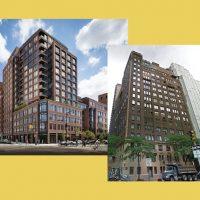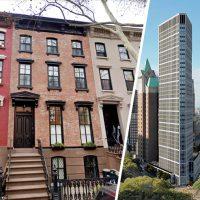Eyeballs were looking for real estate to ogle online, but developers pulled back on hawking their properties.
The amount developers were willing to spend in April was 26.7 percent lower than in the same month in 2019, a report from real estate advertising agency Knightsbridge Park found. The number of inquiries, known in the industry as goals, from consumers fell by 7 percent.
Read more



But the total online traffic in April ticked up by nearly 1 percent year-over-year, which the agency says points to a return of consumer interest after March’s decline of about 15 percent.
“The situation became somewhat normalized,” said Jared Seeger, founder of Knightsbridge Park. He pointed to the breakout of online traffic in particular as evidence that “life does go on.”
In April, online traffic from social media advertising, largely on Instagram and Facebook, was up a stunning 78 percent from a year ago and the number of goals from social platforms jumped 153 percent year-over-year.
Local search traffic, which is generated from users who discover properties on Google Maps, also shot up. Traffic jumped 107 percent and goals 138 percent year-over-year.
Direct traffic, which Knightsbridge pegs as originating from offline efforts like subway ads or events, was down 22 percent year-over-year. Goals in April from direct traffic dropped 39 percent from the same month last year.
In the report, Knightsbridge attributed the large declines to traditional marketing being “heavily disrupted” by shutdowns related to the lockdown.
The report was based on a survey of 70 of the firm’s developer clients advertising residential projects in major cities. About half were in New York City, 20 percent in South Florida, and 15 percent split between Los Angeles and San Francisco.
Seeger said about 70 percent of Knightsbridge clients continued advertising, while about 30 percent stopped or dramatically reduced spending in April.
Advertising dollars began dropping in March, with Knightsbridge reporting a 4.7 percent decrease in monthly spend compared to the same month in 2019. In January and February, advertising was up nearly 14 percent and 17 percent annually. Knightsbridge’s clients spend on average $6,000 a month on digital advertising among Google, Facebook and Instagram.
There’s been a similar trend in print advertising, where the drop-off in developer’s advertising dollars has been even larger (although measuring the impact of print advertising is notoriously difficult to track).
Terry Villani, head of the Villani Group, said she had seen a 75 percent drop in print advertising for new development and some brokerages since March. She said spending on Google and Facebook advertising was 21 percent lower in May than in the same period a year ago.
“Everyone just kind of hit pause for a minute,” said Villani. “It really changed once people couldn’t make appointments and go into sales centers.”
But she noted that subscriptions for print publications are increasing, which could translate into a resurgence for the medium. She pointed to Condé Nast reporting new print subscriptions more than doubled across its publications.
Villani attributed the rise in print readership to “digital fatigue” as people work from home and said she expects print advertising will be steady through the summer and begin to recover in the fall.
“It’s almost been a positive for the print world because it was already on a decline,” she said. “Honestly, Covid might have helped it.”
Write to Erin Hudson at ekh@therealdeal.com
Correction: This article has been revised to reflect that Knightsbridge’s clients spend on average $6,000 a month on digital advertising among Google, Facebook and Instagram, not on all advertising.
